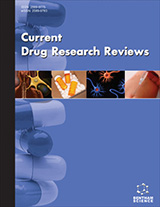
Abstract
Objectives: Mefuparib (CVL218) is one of the second-generation poly-ADP-ribose polymerase (PARP) inhibitors and is used for the treatment of cancer. In this work, the levels of CVL218 in the plasma samples of rats were measured using a newly developed UPLC-MS/MS method.
Methods: Six rats were given CVL218 (3 mg/kg) orally (po), and another six rats received CVL218 (1 mg/kg) intravenously (iv). Rat plasma samples were treated with acetonitrile- methanol (1:1, v/v) for protein precipitation. Cilostazol was used as the internal standard. Over the range of 0.9–450 ng/mL, a standard curve representing known concentrations of CVL218 in blank rat plasma was produced by UPLC-MS/MS. The US Food and Drug Administration (FDA) guidelines were followed in the development of the validation method.
Results: In rat plasma, the accuracy ranged from 90% to 112%, and the intra-day precision and inter- day precision were both less than 15%. The recovery was higher than 87% and the matrix effect varied from 102% to 113%. In the intravenous and oral administration groups, the values of AUC(0-t) were 227.5 ±21.6 and 217.0 ±15.5 ng/mL·h, respectively, and the bioavailability was 31.8%. Furthermore, the half-life (T1/2) for oral and intravenous administration was found to be 1.6 ±0.7 h and 1.7 ±0.3 h, respectively.
Conclusions: The developed UPLC-MS/MS method was successfully applied to the determination of CVL218 in rat plasma following oral and intravenous administration.
























